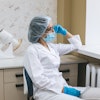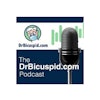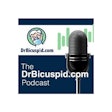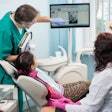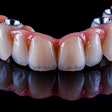
SAN FRANCISCO -- Want to know if you've got cancer? Diabetes? Alzheimer's disease? Just spit! That's the promise coming to dentists' office as early as 2013 David Wong, D.M.D., D.M.Sc., told conferees at the 148th Annual Session of the American Dental Association (ADA).
Dr. Wong, an oral pathologist, and colleagues at the University of California, Los Angeles are designing a handheld device that dentists could use to detect a wide range of diseases in their early stages.
"Mr. Jones, your lesion has a high probability of becoming oral cancer," Dr. Wong imagined the dentist of the future saying to a patient. "We'd like you to come back in three months instead of six."
The test will require virtually no training, he said. As an alternative to the handheld device, dentists could send assays to labs for evaluation.
Saliva may prove even more useful than urine or blood as a diagnostic fluid, Dr. Wong said. Because saliva is filtered from the bloodstream, it carries evidence of many processes going on throughout the body.
But saliva can be collected much less invasively than blood or urine. "Nobody wants a vein opened and nobody wants the embarrassment of going to the bathroom," Dr. Wong pointed out. He noted that conferees who stopped by the saliva screening center at the ADA meeting didn't bother to use the privacy booths to provide samples of their spit.
Already Dr. Wong's lab, along with labs at the University of California, San Francisco, the Scripps Institute in San Diego, California, and a handful of other researchers have identified all the proteins and RNA in saliva. "This is what causes the current excitement in the medical community," Dr. Wong said. About 22 percent of the proteins in saliva are also found in blood plasma.
Dr. Wong's lab has found a very high correlation between differences in five proteins and the incidence of oral cancer.
The area under a receiver operated characteristic (ROC) curve -- where a value of 1 is total accuracy and a value of 0 is total inaccuracy -- was 0.94 for detecting oral cancer with these proteins. Using RNA to detect oral cancer, the ROC was 0.95. By comparison, the ROC for a protein specific antigen (PSA) test for prostate cancer, already commonly used, is only 0.70, Dr. Wong said.
The saliva test offers particular potential for early treatment of oral cancer which afflicts 30,000 people in the United States each year. When doctors catch the disease at stage I, at least 80 percent of patients survive. That survival rate dwindles below 40 percent by stage IV, and often treatments involve removing sections of the jaw and neck.
Saliva may prove useful for many other diseases as well. Dr. Wong's lab is investigating it for Sjögren's syndrome, lung cancer, breast cancer, pancreatic cancer, ovarian cancer, type II diabetes and Alzheimer's disease. Saliva may be useful for diagnosing periodontal diseases and salivary gland disease as well.
"A drop of this fluid is embedded with a wealth of information," he said.

